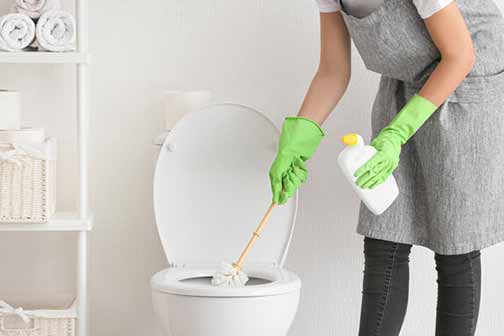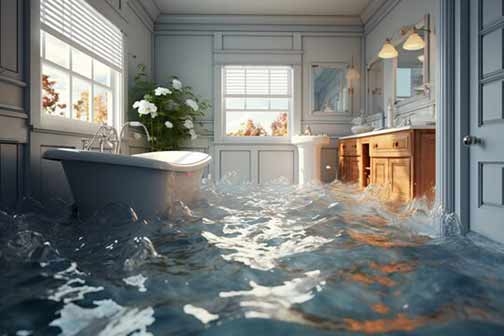Assess the Situation in the Bathroom
The first crucial step when you realize that your bathroom is flooding is to assess the situation thoroughly. Check the extent of the flooding and identify the source of the water. Look for signs such as water overflowing from the bathtub, sink, toilet, or a burst pipe. Understanding the exact cause of the flooding will help you take appropriate actions to stop further water damage.
Turn Off the Water Supply
Once you have determined the source of the flooding, the next immediate step is to turn off the water supply to the bathroom. Locate the shut-off valves for the sink, toilet, and bathtub, and turn them off to prevent more water from spilling onto the floor. If you cannot find the individual shut-off valves or if the flooding continues, you may need to shut off the main water supply to your home.
Ensure Electrical Safety
Water and electricity are a dangerous combination. To ensure your safety, turn off the electricity to the bathroom from the main circuit breaker. This step is essential to prevent electrical shocks or fires. Avoid using any electrical appliances or switches in the flooded area until it is safe to do so.
Remove Excess Water
After ensuring safety measures are in place, the next step is to remove excess water from the bathroom. Use buckets, mops, or a wet/dry vacuum to get rid of standing water. The goal is to minimize water damage to the flooring, walls, and fixtures. Open windows and doors to improve ventilation and assist the drying process.
Dry Out the Affected Area
Thoroughly drying the affected area is essential to prevent mold and mildew growth. Use fans, dehumidifiers, and towels to dry out the bathroom as quickly as possible. Pay attention to hidden areas such as under cabinets and behind baseboards to ensure they are dry as well.
Document the Damage
Take photographs and make detailed notes of the damage caused by the bathroom flood. This documentation will be valuable for insurance claims and for hiring professionals for any plumbing repairs. Capture images of the flooded areas, damaged fixtures, and any personal property affected by the flood.
Contact Your Insurance Company
Reach out to your homeowner’s insurance company to report the flood and start the claim process. Provide them with the documentation you have gathered, including photographs and notes. The insurance company will guide you through the necessary steps and inform you of the coverage and any deductibles.

Clean and Disinfect
After removing the water and drying the area, it’s important to clean and disinfect the bathroom. Use appropriate cleaning solutions to sanitize surfaces and prevent the spread of bacteria and mold. Pay special attention to areas that were submerged in water, such as floors, walls, and cabinets.
Check for Structural Damage
Inspect the bathroom for any structural damage caused by the flooding. Look for signs such as warped flooring, weakened walls, or damaged fixtures. If you notice any significant issues, it may be necessary to hire a professional contractor to assess and repair the damage.
Restore Bathroom Fixtures
Once the bathroom is clean and dry, and any structural damage has been addressed, you can begin restoring the fixtures. This may include repairing or replacing damaged sinks, toilets, bathtubs, and cabinetry. If you are unsure about how to perform these repairs, consider hiring a licensed plumber or contractor for assistance.
Prevent Future Floods
Finally, take steps to prevent future bathroom floods. Regularly inspect the plumbing and fixtures for any signs of wear or leaks. Address issues promptly to avoid potential flooding. Consider installing water leak detection devices that can alert you to potential leaks before they cause significant damage. Taking preventive measures can save you from the stress and cost of dealing with another bathroom flood.
Contact Professionals for Help
In cases where the flooding is extensive or you’re not confident in handling the cleanup and repairs, it’s wise to contact professionals for help. Water damage restoration companies have specialized equipment and expertise to manage severe flooding effectively. Professional plumbers can address underlying plumbing issues to prevent future occurrences.
Stay Calm and Act Quickly
While a bathroom flood can be overwhelming, staying calm and acting quickly is key to minimizing damage. By following these immediate steps, you can effectively manage the situation and protect your property. Remember, prompt action and thorough attention to detail are critical in mitigating the impact of a bathroom flood.


